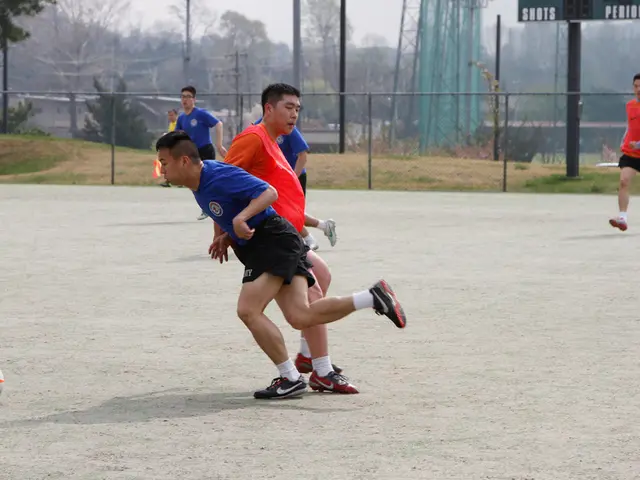Consequences of Using Same Shoes for Both Running and Weight Lifting: Potential Issues and Injuries
Runners, weightlifters, and hybrid athletes alike may question if a single pair of shoes is all that's needed for both cardio and strength training activities. However, according to John Mercer, Ph.D., a professor in the department of kinesiology and nutrition sciences at the University of Nevada, Las Vegas, choosing the right tool is essential. Different activities require different equipment, just as choosing a hammer over a screwdriver for a project.
The specifics of when and why one might consider shoes specific to each segment or session depend on factors such as workout intensity and type of weight training. For more complex movements utilizing free weights, the design of the shoes becomes more important, as they often have rigid, firm midsoles and dense rubbery outsoles, providing a stable and heavy base for safe and varied movements.
Running shoes, on the other hand, generally feature significant cushioning, providing a platform that assimilates shock from each footstrike while also contributing a springy quality to aid the next stride. This combination can improve performance and potentially mitigate injury risks, primarily by spreading out the impact's force. Running shoe soles are also often rocker-shaped, guiding the foot through each stride.
Running shoes may, however, become liabilities when used for purposes other than intended, especially during activities like powerlifting or other raw weightlifting movements. Using running shoes for strength training can lead to injuries like shin splints, stress fractures, and balance issues due to their soft, flexible sole and limited toe range of motion. Lateral support, which prevents ankle rolls, is another feature missing from running shoes during strength training.
It is, therefore, generally advisable to have separate shoes for each activity, but cross-training shoes like the Reebok Nano X4 or lighter running shoes like Nike Pegasus could serve as a compromise for those concerned about purchasing multiple pairs. In addition, some might find barefoot lifting advantageous for improving proprioception, which refers to feeling more connected to the ground and more balanced, potentially benefiting both lifting and running performance.
For those with foot issues or concerned about proper footwear for their specific activities, consulting a healthcare professional trained in working with active individuals, such as a physical therapist or sports podiatrist, can help determine the best footwear for their needs.
Remember that sharp pain during a workout should signal the need for a shoe change, as this pain could indicate a problem with the current pair. In case the pain persists, reaching out to a healthcare professional is always a good idea.
Ultimately, the specific design of running shoes and weightlifting shoes offers unique benefits tailored to their respective activities, making it crucial to select the appropriate footwear for optimal performance and injury prevention.
- Runners, weightlifters, and hybrid athletes might question the necessity of a single pair of shoes for both cardio and strength training activities, but John Mercer, Ph.D., suggests that choosing the right tool is essential, just like choosing a hammer over a screwdriver for a project.
- The design of shoes matters in different activities, particularly for complex movements utilizing free weights, as they usually have firm midsoles and dense rubbery outsoles, providing a stable base for safe and varied movements.
- In contrast, running shoes often feature significant cushioning, assimilating shock from each footstrike and contributing a springy quality to aid the next stride, which can improve performance and potentially mitigate injury risks.
- Using running shoes for strength training, such as powerlifting or other raw weightlifting movements, can lead to injuries like shin splints, stress fractures, and balance issues due to their soft, flexible sole and limited toe range of motion.
- Some athletes might find barefoot lifting advantageous for improving proprioception, which can potentially benefit both lifting and running performance. However, for those with foot issues or concerned about proper footwear for their specific activities, consulting a healthcare professional trained in working with active individuals, such as a physical therapist or sports podiatrist, can help determine the best footwear for their needs.
- Remember that sharp pain during a workout could indicate a problem with the current pair of shoes, so it's advisable to consider a shoe change. In case the pain persists, reaching out to a healthcare professional is always a good idea.








